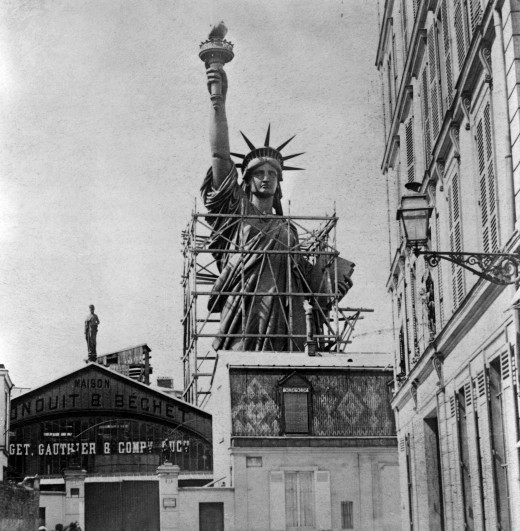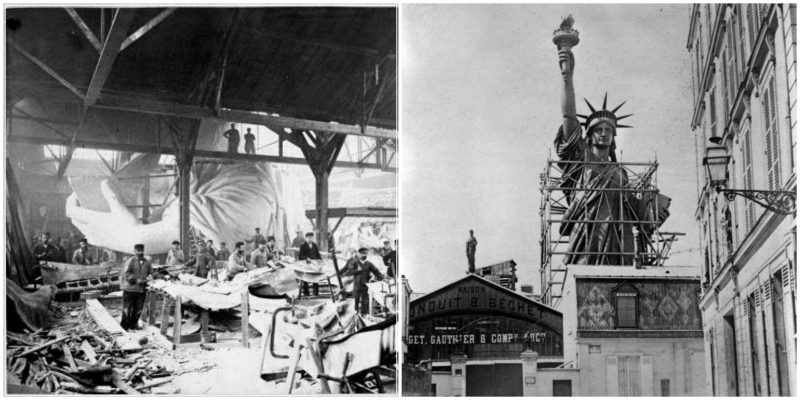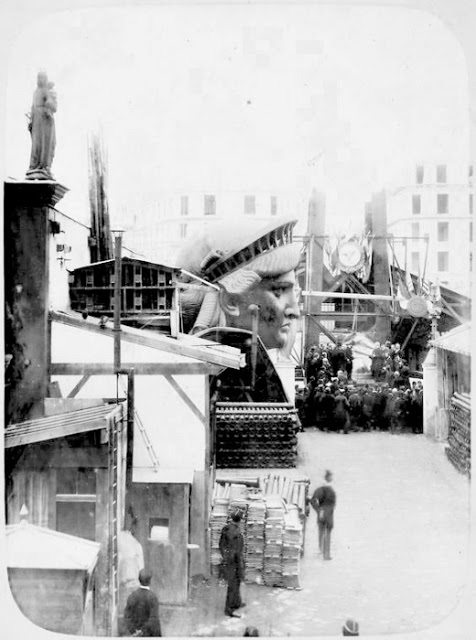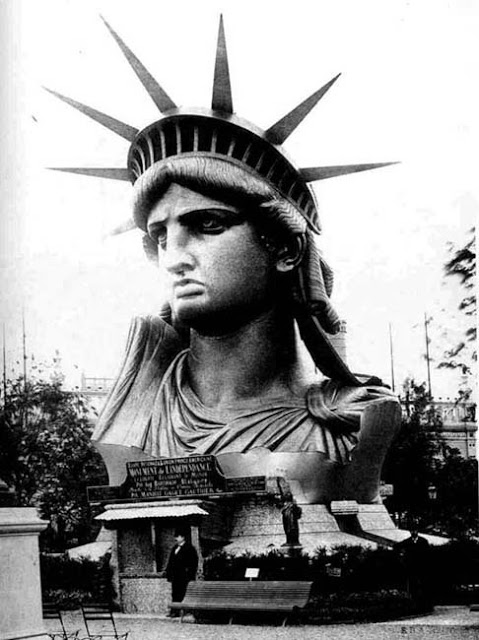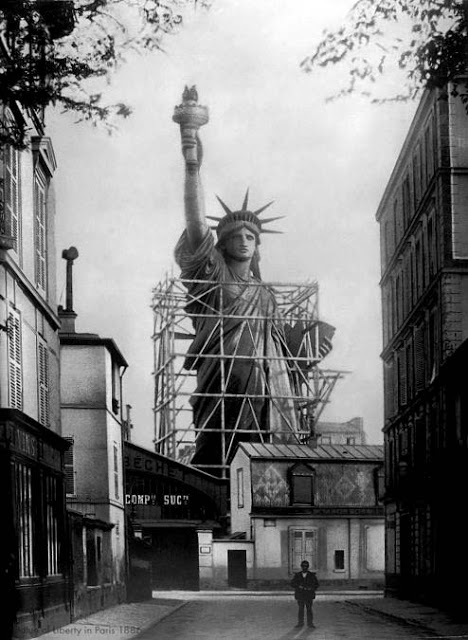Lady Liberty is one of the most iconic landmarks in New York, we have seen the scene that opens up with an aerial view of the colossal neoclassical sculpture in like gazillion movies and music videos.
The statue is an icon of freedom and of the United States, back in the days Lady Liberty served as a welcoming sight to immigrants arriving from abroad.
The copper statue, designed by Frédéric Auguste Bartholdi, a French sculptor, was built by Gustave Eiffel and dedicated on October 28, 1886. It was a gift to the United States from the people of France.
Bartholdi was inspired by French law professor and politician Édouard René de Laboulaye, who is said to have commented in 1865 that any monument raised to American independence would properly be a joint project of the French and American people. He may have been minded to honor the Union victory in the American Civil War and the end of slavery. Due to the troubled political situation in France, work on the statue did not commence until the early 1870s. In 1875, Laboulaye proposed that the French finance the statue and the Americans provide the site and build the pedestal. Bartholdi completed the head and the torch-bearing arm before the statue was fully designed, and these pieces were exhibited for publicity at international expositions.
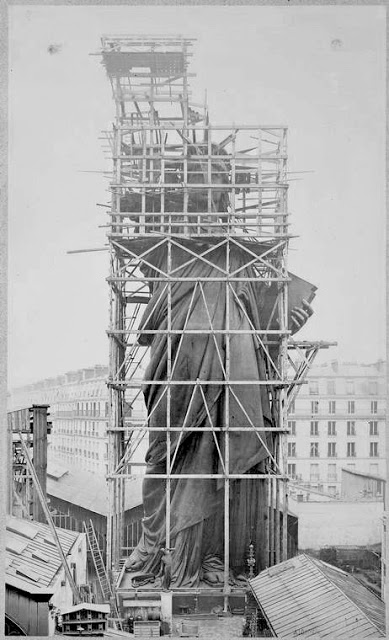
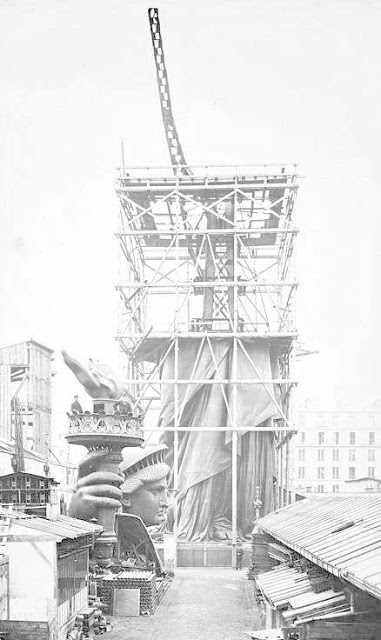
According to the National Park Service, the idea for the Statue of Liberty was first proposed by Edouard de Laboulaye the president of the French Anti-Slavery Society and a prominent and important political thinker of his time. The project is traced to a conversation between Édouard René de Laboulaye, a staunch abolitionist and Frédéric Bartholdi, a sculptor in mid-1865. In after-dinner conversation at his home near Versailles, Laboulaye, an ardent supporter of the Union in the American Civil War, is supposed to have said: “If a monument should rise in the United States, as a memorial to their independence, I should think it only natural if it were built by united effort—a common work of both our nations.”The National Park Service, in a 2000 report, however, deemed this a legend traced to an 1885 fundraising pamphlet, and that the statue was most likely conceived in 1870.In another essay on their website, the Park Service suggested that Laboulaye was minded to honor the Union victory and its consequences, “With the abolition of slavery and the Union’s victory in the Civil War in 1865, Laboulaye’s wishes of freedom and democracy were turning into a reality in the United States. In order to honor these achievements, Laboulaye proposed that a gift be built for the United States on behalf of France. Laboulaye hoped that by calling attention to the recent achievements of the United States, the French people would be inspired to call for their own democracy in the face of a repressive monarchy
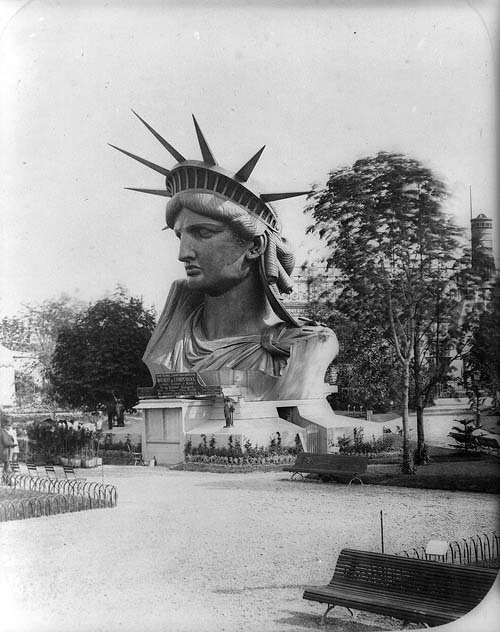
By 1875, France was enjoying improved political stability and a recovering postwar economy. Growing interest in the upcoming Centennial Exposition in Philadelphia led Laboulaye to decide it was time to seek public support.In September 1875, he announced the project and the formation of the Franco-American Union as its fundraising arm. With the announcement, the statue was given a name, Liberty Enlightening the World. The French would finance the statue; Americans would be expected to pay for the pedestal.The announcement provoked a generally favorable reaction in France, though many Frenchmen resented the United States for not coming to their aid during the war with Prussia. French monarchists opposed the statue, if for no other reason than it was proposed by the liberal Laboulaye, who had recently been elected a senator for life.Laboulaye arranged events designed to appeal to the rich and powerful, including a special performance at the Paris Opera on April 25, 1876, that featured a new cantata by composer Charles Gounod. The piece was titled La Liberté éclairant le monde, the French version of the statue’s announced name
Although plans for the statue had not been finalized, Bartholdi moved forward with fabrication of the right arm, bearing the torch, and the head. Work began at the Gaget, Gauthier & Co. workshopIn May 1876, Bartholdi traveled to the United States as a member of a French delegation to the Centennial Exhibition,and arranged for a huge painting of the statue to be shown in New York as part of the Centennial festivities.The arm did not arrive in Philadelphia until August; because of its late arrival, it was not listed in the exhibition catalogue, and while some reports correctly identified the work, others called it the “Colossal Arm” or “Bartholdi Electric Light”. The exhibition grounds contained a number of monumental artworks to compete for fairgoers’ interest, including an outsized fountain designed by Bartholdi. Nevertheless, the arm proved popular in the exhibition’s waning days, and visitors would climb up to the balcony of the torch to view the fairgrounds. After the exhibition closed, the arm was transported to New York, where it remained on display in Madison Square Park for several years before it was returned to France to join the rest of the statue.
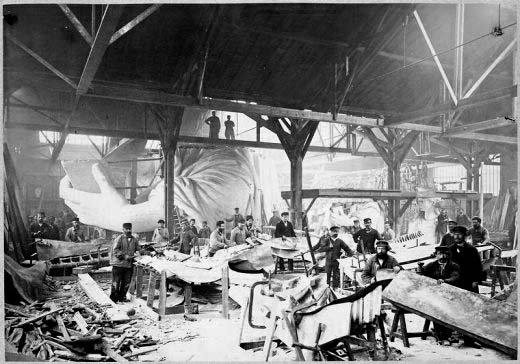
During his second trip to the United States, Bartholdi addressed a number of groups about the project, and urged the formation of American committees of the Franco-American Union.Committees to raise money to pay for the foundation and pedestal were formed in New York, Boston, and Philadelphia.The New York group eventually took on most of the responsibility for American fundraising and is often referred to as the “American Committee”.One of its members was 19-year-old Theodore Roosevelt, the future governor of New York and president of the United States.On March 3, 1877, on his final full day in office, President Grant signed a joint resolution that authorized the President to accept the statue when it was presented by France and to select a site for it. President Rutherford B. Hayes, who took office the following day, selected the Bedloe’s Island site that Bartholdi had proposed.
On his return to Paris in 1877, Bartholdi concentrated on completing the head, which was exhibited at the 1878 Paris World’s Fair. Fundraising continued, with models of the statue put on sale. Tickets to view the construction activity at the Gaget, Gauthier & Co. workshop were also offered.The French government authorized a lottery; among the prizes were valuable silver plate and a terracotta model of the statue. By the end of 1879, about 250,000 francs had been raised.
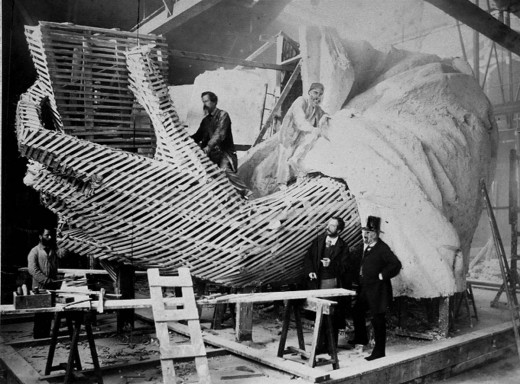
The head and arm had been built with assistance from Viollet-le-Duc, who fell ill in 1879. He soon died, leaving no indication of how he intended to transition from the copper skin to his proposed masonry pier.The following year, Bartholdi was able to obtain the services of the innovative designer and builder Gustave Eiffel.Eiffel and his structural engineer, Maurice Koechlin, decided to abandon the pier and instead build an iron truss tower. Eiffel opted not to use a completely rigid structure, which would force stresses to accumulate in the skin and lead eventually to cracking. A secondary skeleton was attached to the center pylon, then, to enable the statue to move slightly in the winds of New York Harbor and as the metal expanded on hot summer days, he loosely connected the support structure to the skin using flat iron barswhich culminated in a mesh of metal straps, known as “saddles”, that were riveted to the skin, providing firm support. In a labor-intensive process, each saddle had to be crafted individually.To prevent galvanic corrosion between the copper skin and the iron support structure, Eiffel insulated the skin with asbestos impregnated with shellac.
Eiffel’s design made the statue one of the earliest examples of curtain wall construction, in which the exterior of the structure is not load bearing, but is instead supported by an interior framework. He included two interior spiral staircases, to make it easier for visitors to reach the observation point in the crown. Access to an observation platform surrounding the torch was also provided, but the narrowness of the arm allowed for only a single ladder, 40 feet (12 m) long.As the pylon tower arose, Eiffel and Bartholdi coordinated their work carefully so that completed segments of skin would fit exactly on the support structure. The components of the pylon tower were built in the Eiffel factory in the nearby Parisian suburb of Levallois-Perret.
